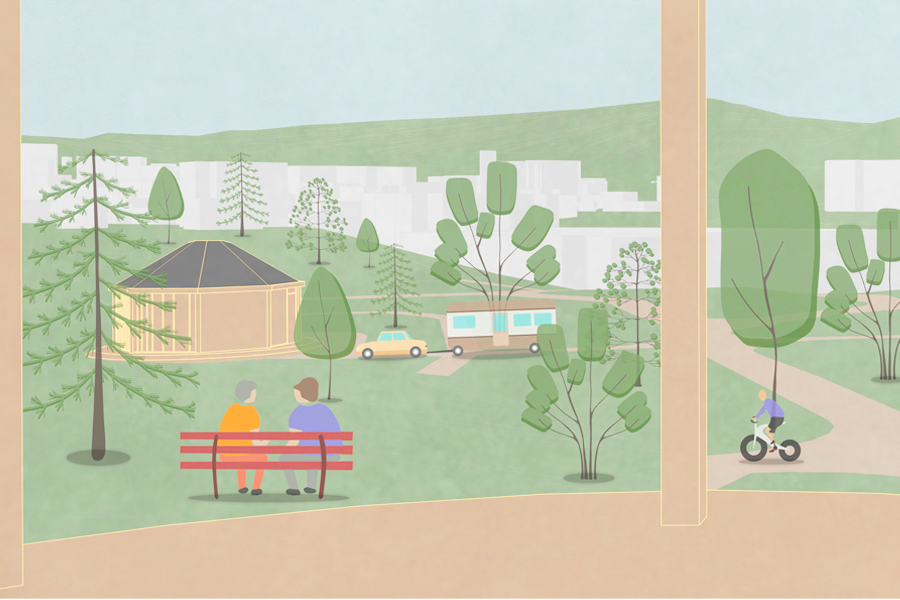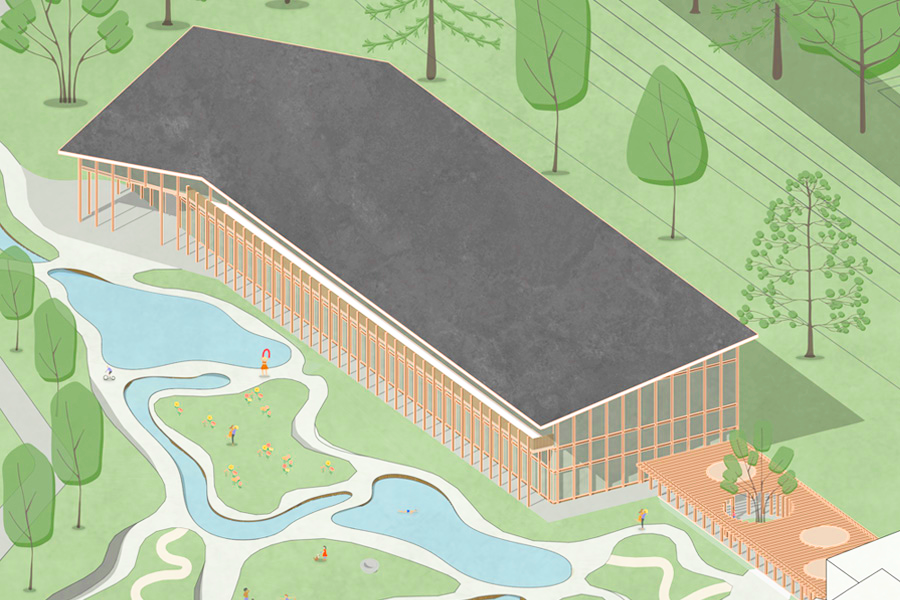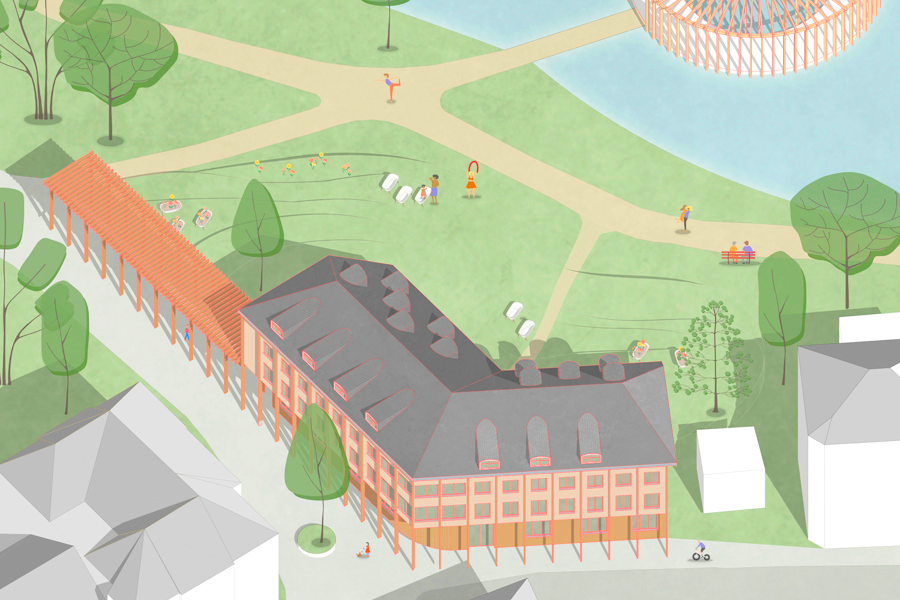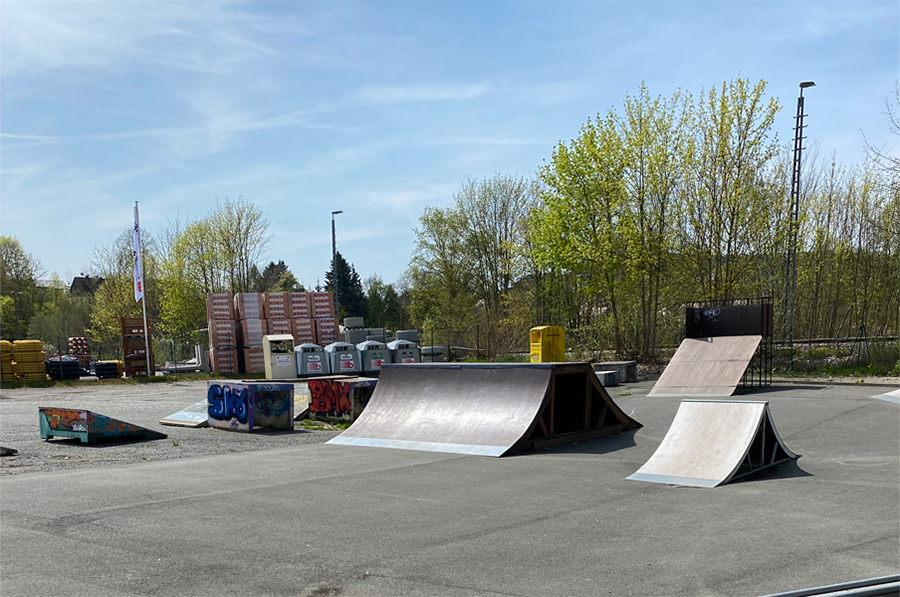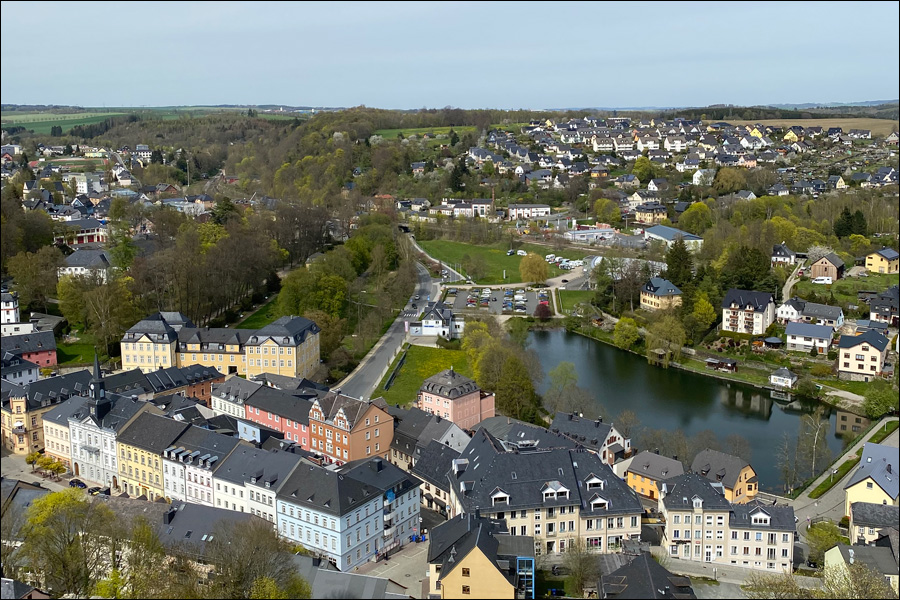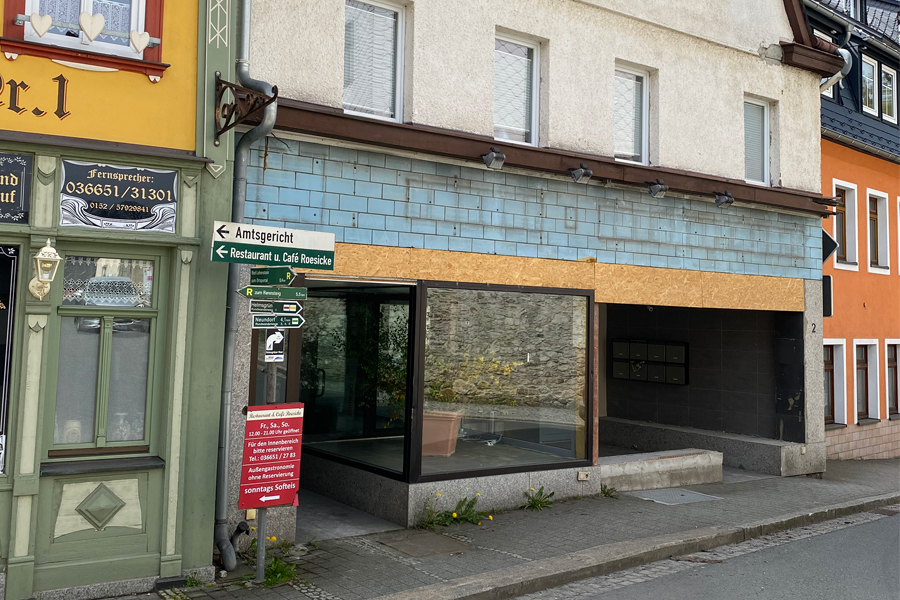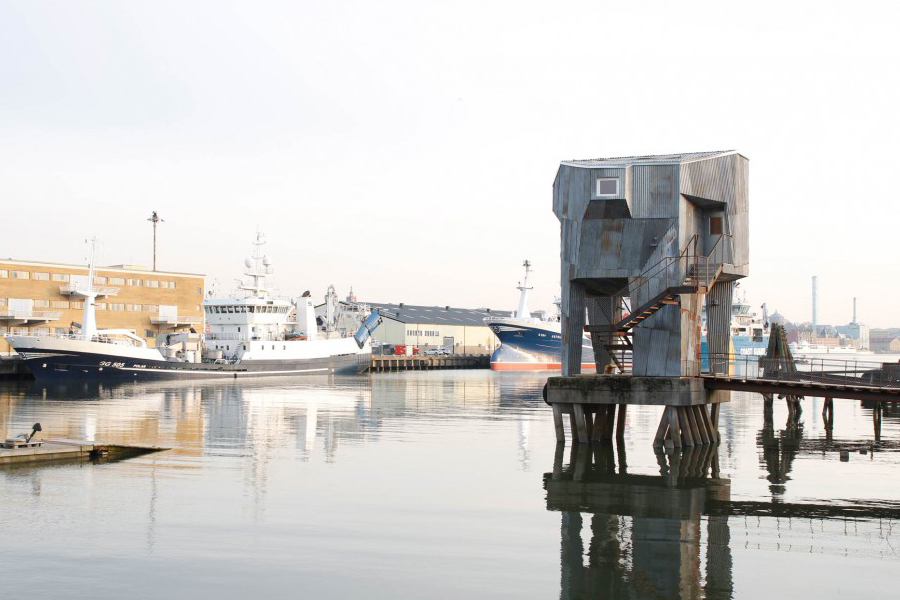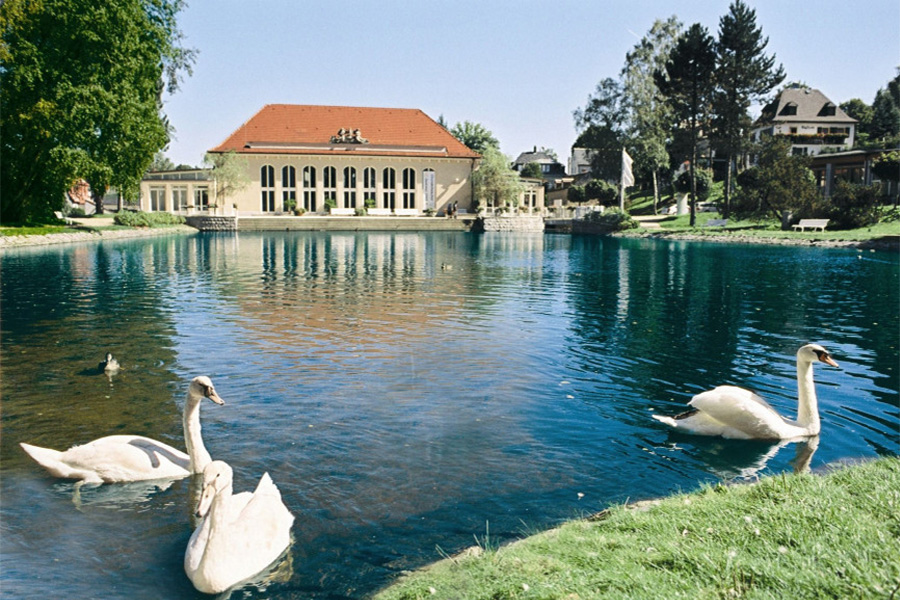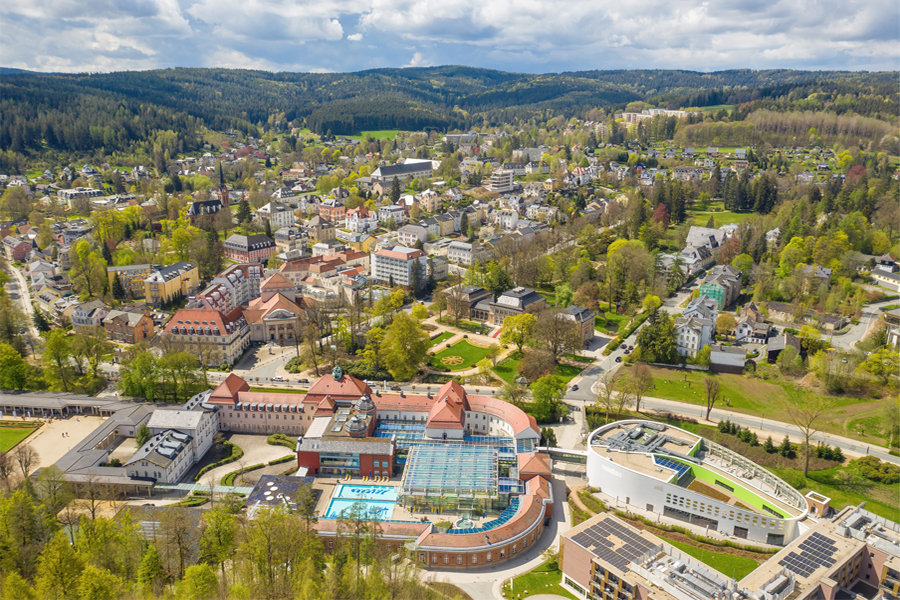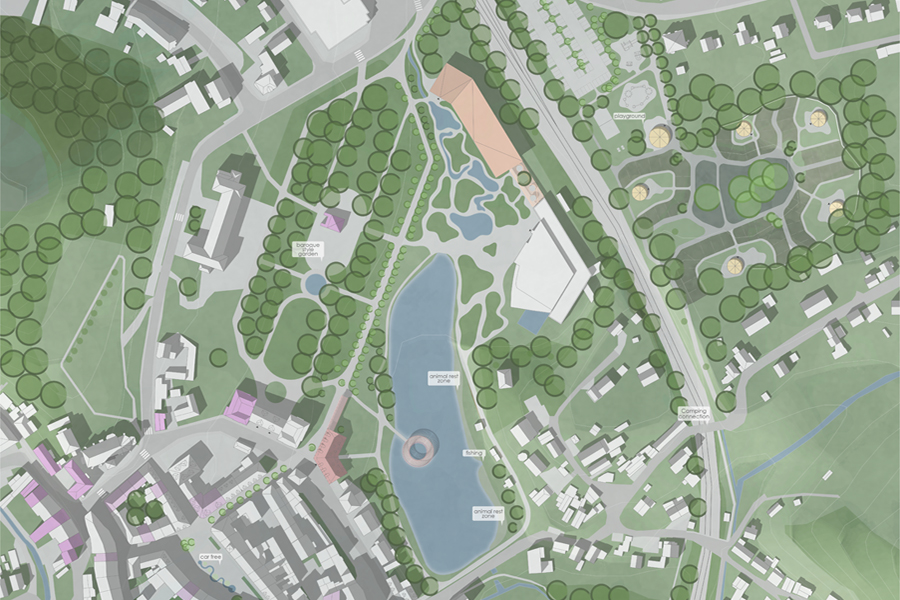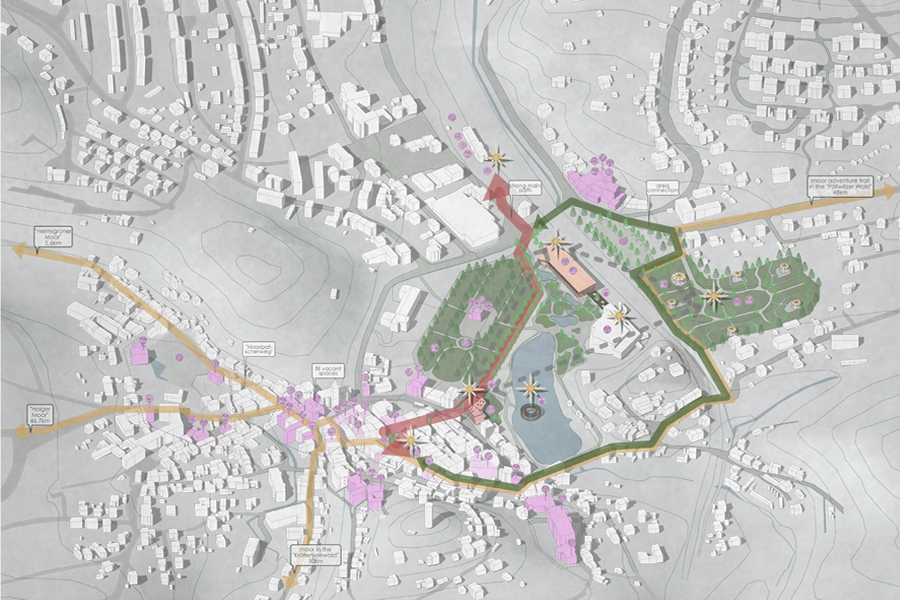with MOOOR sense through the city
Bad Lobenstein (DE) - Runner-up

TEAM DATA
Associates: Erik Ludwig Schneider (DE) – architect, Laura Chichowitz (DE), Eloïse Greet P Desrumaux (BE), Johanna Charlotte Stahmann (DE) – students in architecture
mail@jogels.de
jogels-architektur.de
See the complete listing of portraits here
See the site here
TEAM PORTRAIT
VIDEO (by the team)
INTERVIEW
Click on the images to enlarge
1. How do you define the main issue of your project in relation with the theme “Living Cities Imagining architecture taking care of the milieus”? And in which way do you think your project can contribute to an ecological and/or social evolution?
Bad Lobenstein was once intricately interwoven with its tourism industry, but presently, the city appears somewhat lost. The tourism sector had historically been a robust generator of employment, providing a significant boost to the entire area. It retained the youth within the confines of the spa town, igniting entrepreneurial spirit and enabling the city to flourish. However, the city found itself ensnared within a downward spiral. However, it became entangled in a negative spiral. Tourism decreased, the city became less appealing, and young families departed. Vacancies proliferated, buildings fell into neglect, and a sense of decay settled in. With MOOOR sense through the city aims to break this negative cycle by addressing the city’s three weaknesses. Through ‘expansion’, we aim to enlarge the existing thermal baths (implementation: Moor bad) to better align with the social expectations of today's tourists (implementation: Moor care, a medical care center). This involves incorporating both architectural and landscaping elements to ensure the preservation of the crucial link between nature and culture, integral to Bad Lobenstein’s essence. Moreover, connectivity plays a pivotal role. In the current scenario, this aspect has somewhat faded. The old city center, the city park, and the thermal baths will be connected via a central walking axis. Additionally, a secondary axis will link the camping site (implementation: Moor resting), creating a loop. Along these pathways, various clusters of vacant spaces will be transformed into vibrant hubs. We believe this initiative will significantly boost tourism while fostering positive social development. Furthermore, ecological considerations are paramount. More green spaces will be integrated into the city center, and the walking trails will be surrounded by greenery. Thus, the camping site will be immersed in nature. Overnight guests will intimately coexist with nature, fostering a robust synergy between humans and the natural environment.
2. How did the issues of your design and the questions raised by the site mutation meet?
During the site visit, it quickly became evident that a significant amount of vibrancy had been lost. Not only were there few people on the streets, but there was also a lack of activities. The thermal baths, which constitute Bad Lobenstein's main attraction, were relatively small in size. They lacked prominence and operated independently of the city. Similarly, the camping area consisted merely of an expanse of greenery with three mobile homes, and the pavilion within the city park remained closed. Although the thermal baths themselves hosted visitors, this vibrancy was not palpable from the exterior. Furthermore, there was a notable absence of connectivity between the various districts of the city. The city center was particularly characterized by extensive vacancies. Conversations with residents provided deeper insights into the issues at hand. They highlighted that the absence of tourists led to the closure of numerous businesses. The departure of young individuals after completing their studies further contributed to the lack of liveliness within the city. Nevertheless, they expressed surprise and contentment that the city was willing to make changes and retained their belief in a forthcoming revitalization.
PROJECT:



Each team member hails from a diverse architectural background, but we all have a low expertise in urban planning. Engaging in this project posed a fresh challenge for us all, given its pronounced urban planning focus. It propelled us beyond our comfort zones, necessitating contemplation of new elements and the resolution of unconventional issues. Our initial phase involved an in-depth analysis of the Allmänna Badet sauna in Göteborg, providing us with insights into the broader spa culture. Subsequently, our attention shifted towards a deeper exploration of the project itself. Drawing inspiration from numerous neighboring spa cities, we conducted meticulous analyses of these locales alongside our own site. Through a comprehensive review of various urban planning designs, we formulated strategies to tackle the challenges of Bad Lobenstein.
SITE:



Our approach comprises various interlinked implementations forming a unified and coherent entity. These can be arranged in an order delineated within the corresponding text. Given the relatively modest scale of these implementations, there exists plenty of room for negotiation and adaptation without necessitating a complete overhaul of the overarching concept. Initially, we didn’t thoroughly contemplate time management during the project development phase. Subsequently, it became clear that the sequence of construction follows a logical and meaningful progression. Nevertheless, we consistently prioritized the negotiation process. Our intent was to craft a flexible project deeply rooted in the Bad Lobenstein community. For instance, addressing the issue of vacant spaces entails actively engaging and incentivizing local residents. We firmly believe in the crucial role of community involvement; it is imperative to integrate the inhabitants as active participants within the project.
REFERENCES:



This project was created during a design studio at Brandenburg University of Technology in Cottbus under the guidance of R. Bondzio, J. Boettger, V. Schmidt, and D. Felber. Our group was formed during this course. We didn't know each other previously, but collaborated effectively and got along well.
6. How could this prize help you in your professional career?
Taking part in this competition, as well as winning an award, will be a great boost for our careers. Through the official site visits, Q&A sessions, and studying the competition's requirements, we gained valuable insights into how these events work, inspiring us to consider future participation. Winning this prize is a great achievement, but it is even more amazing to continue this journey. We believe that the resulting publication will enhance our job prospects, and the experience gained will be valuable anytime throughout our careers.
TEAM IDENTITY
Legal status:
Team name:
Average age of the associates: 28 years old
Has your team, together or separately, already conceived or implemented some projects and/or won any competition? if so, which ones?
No.
WORKS:



